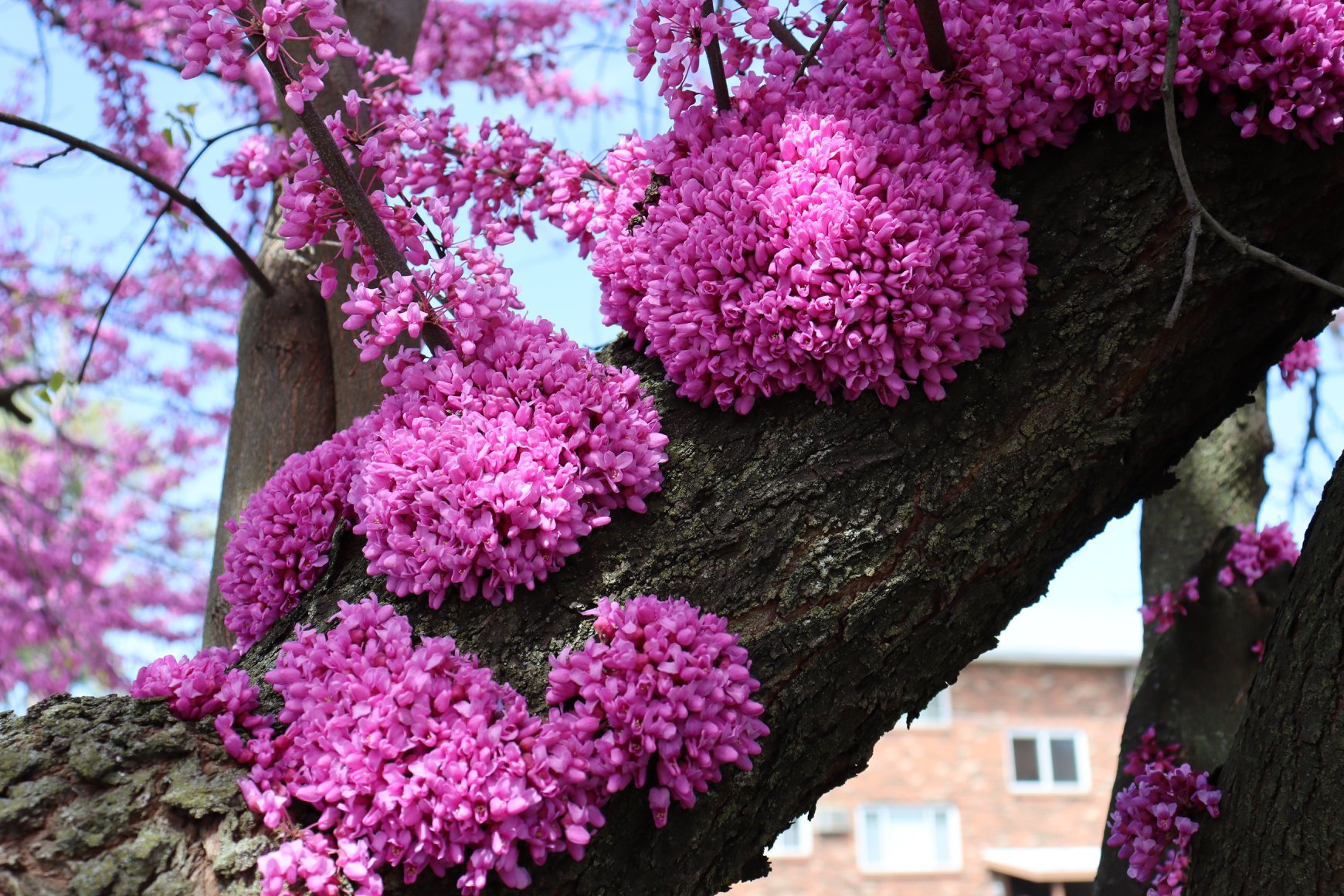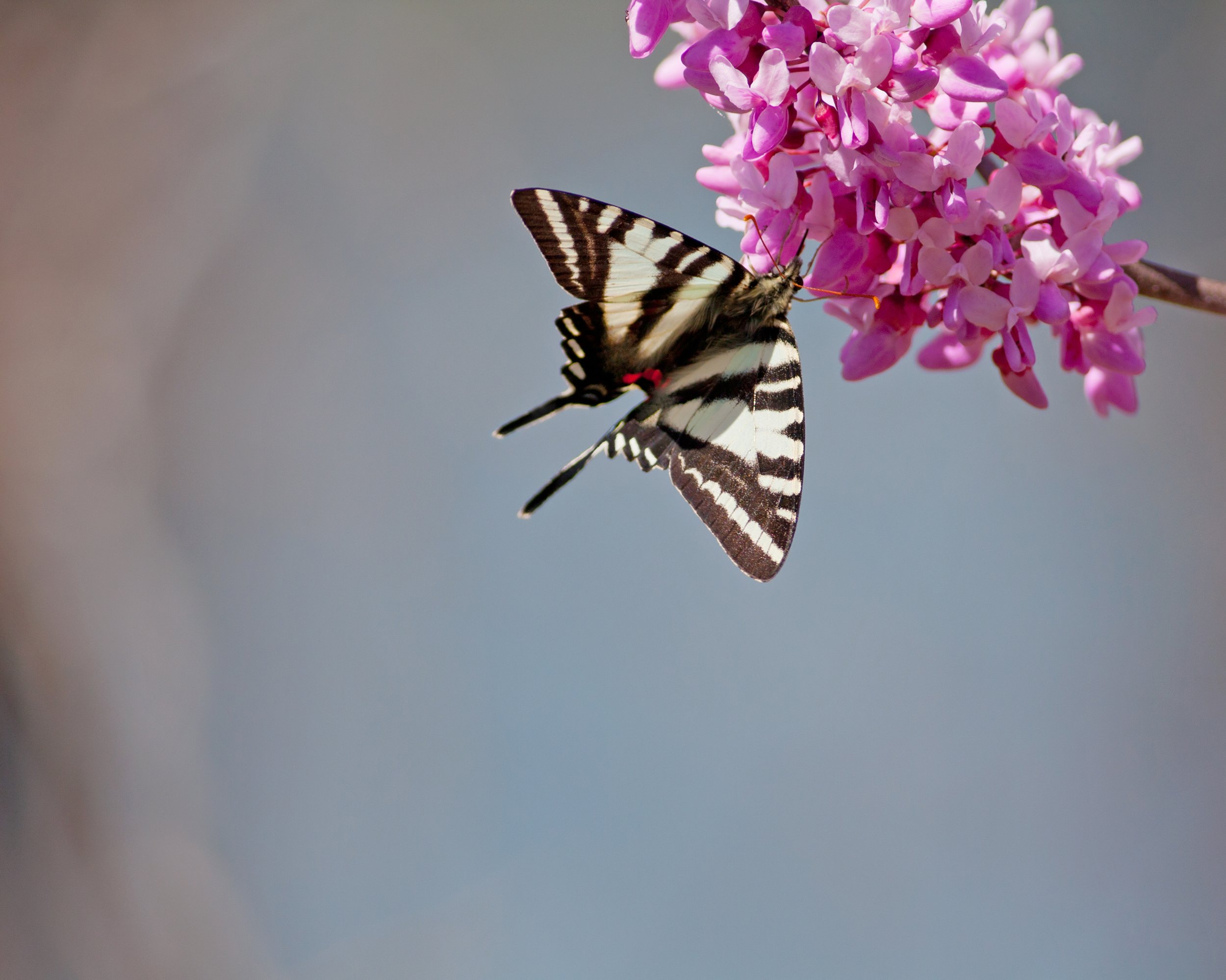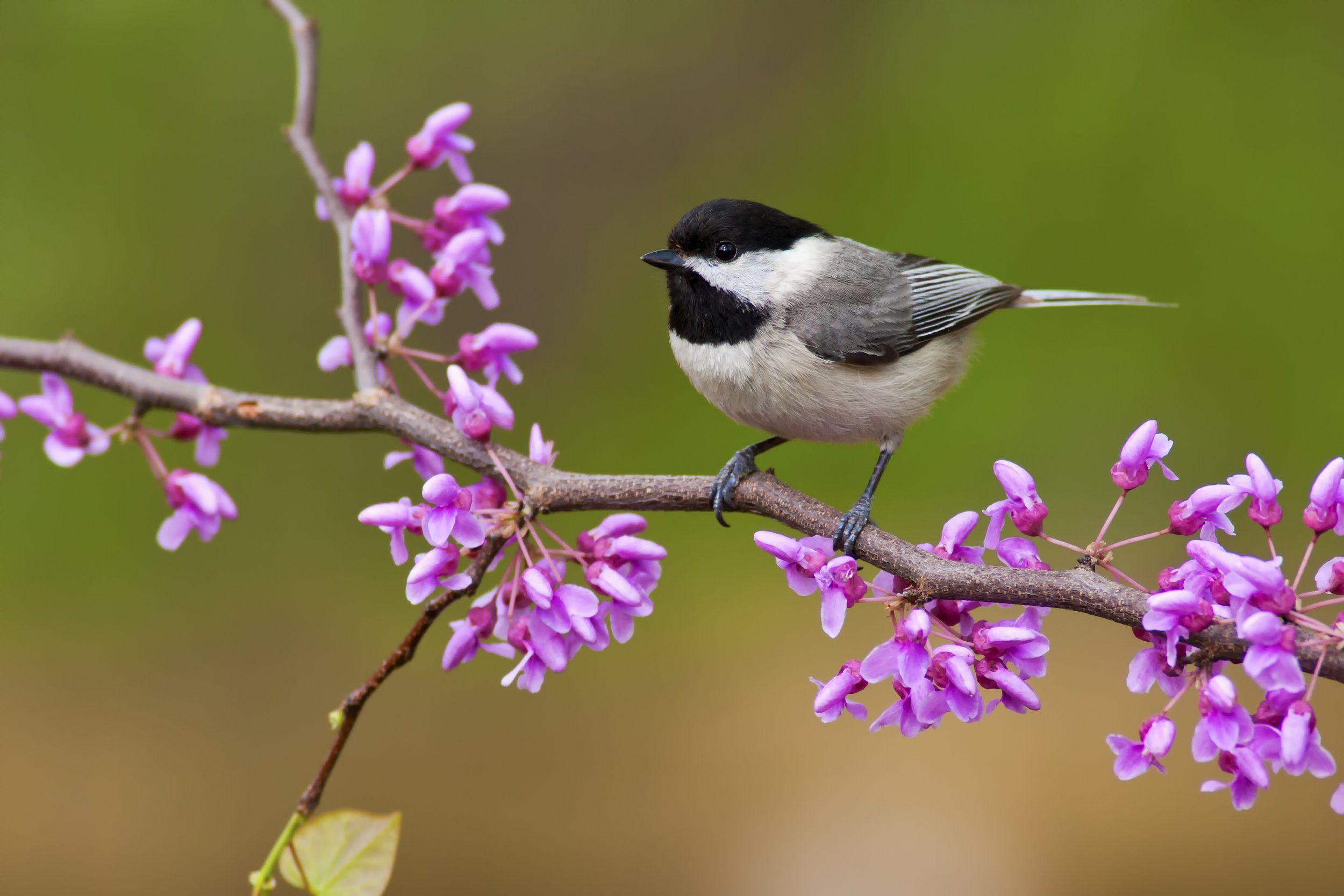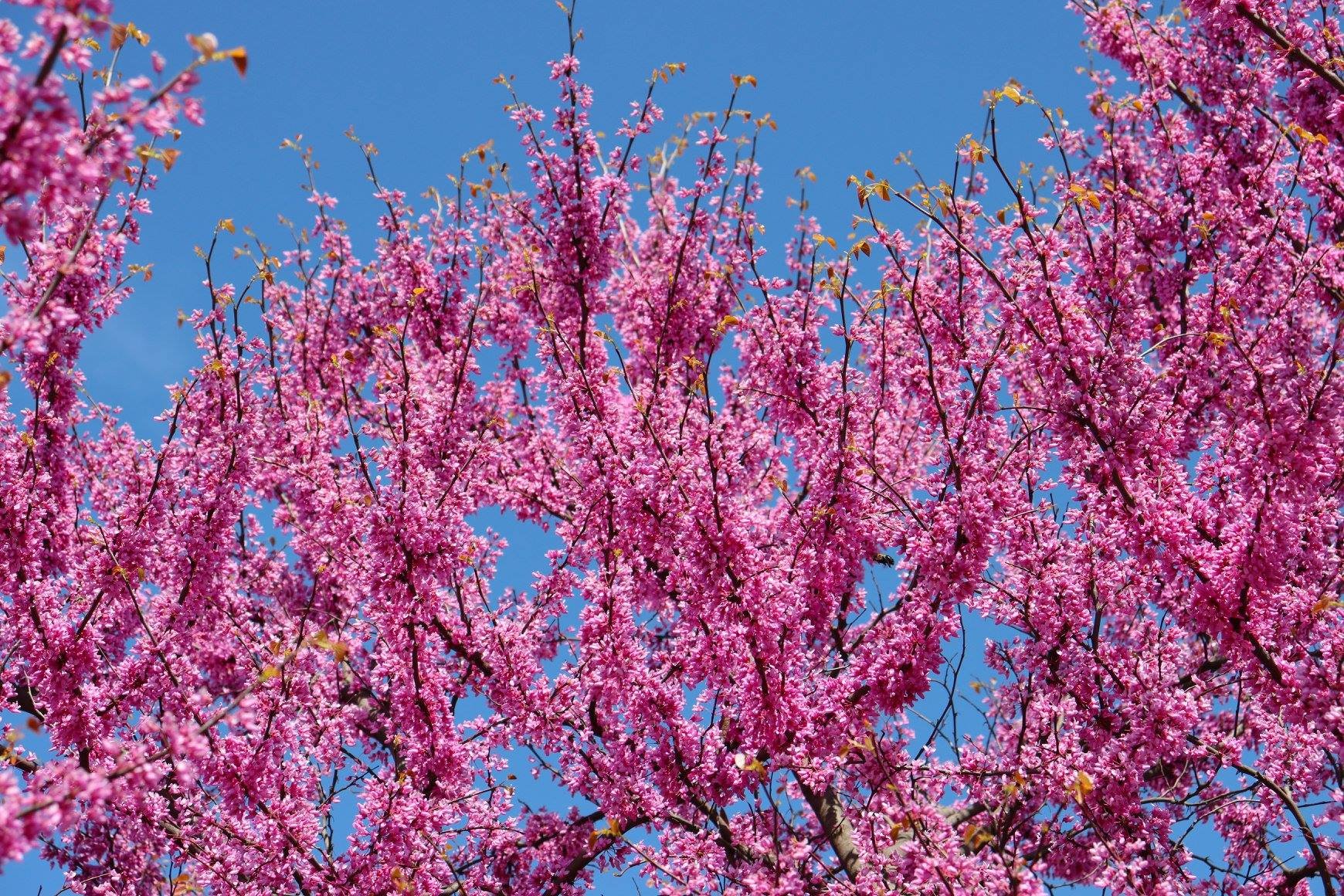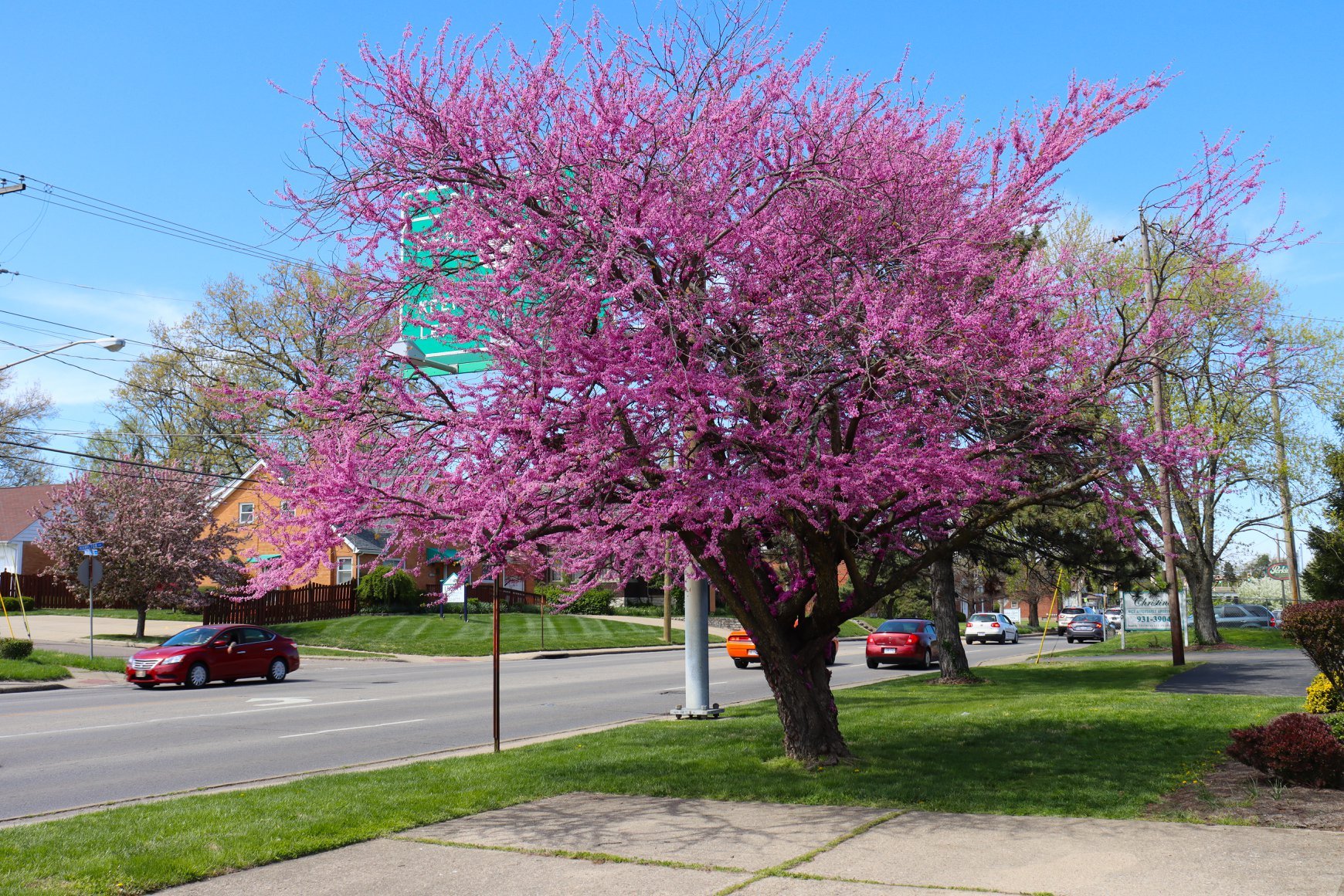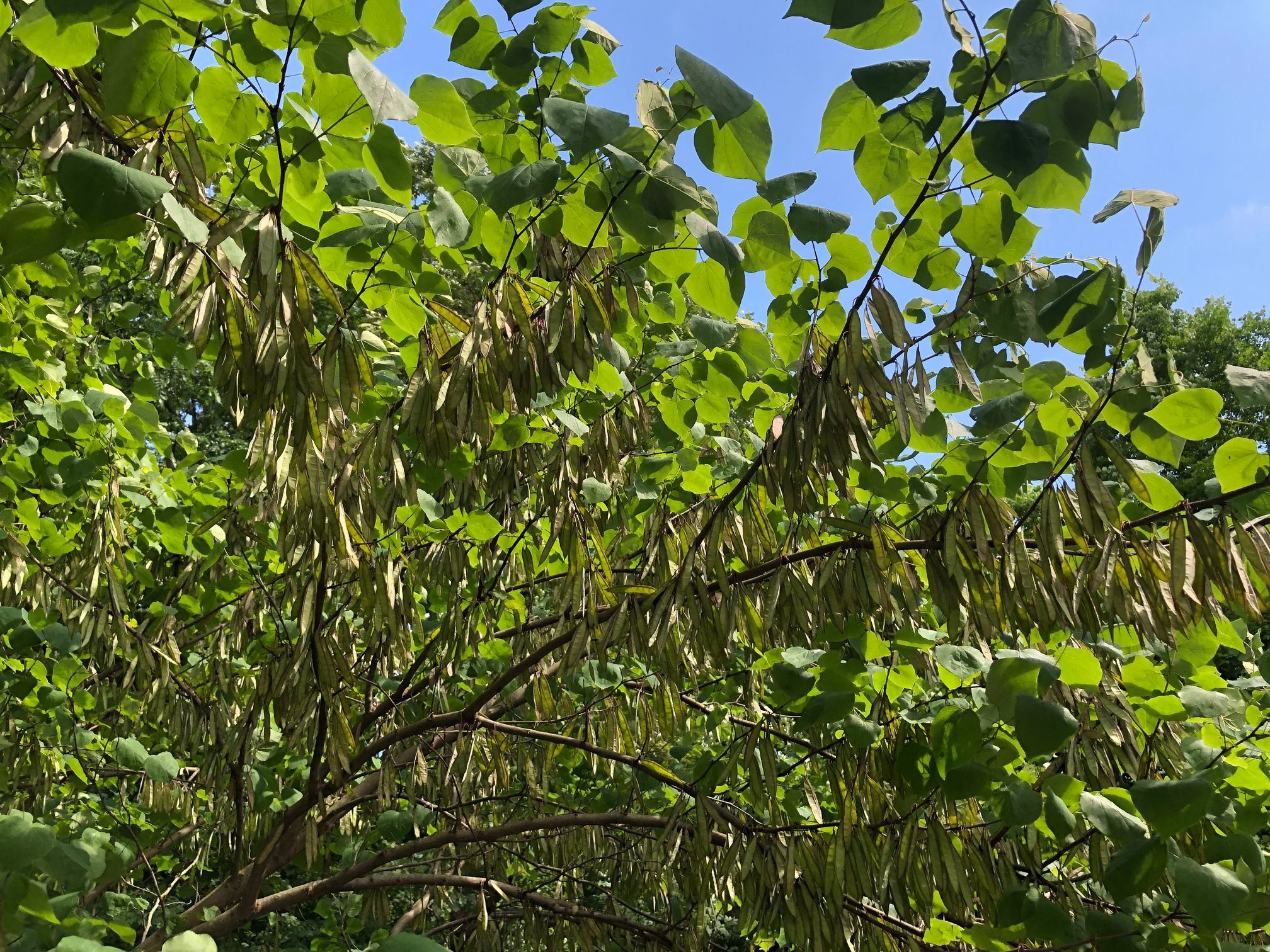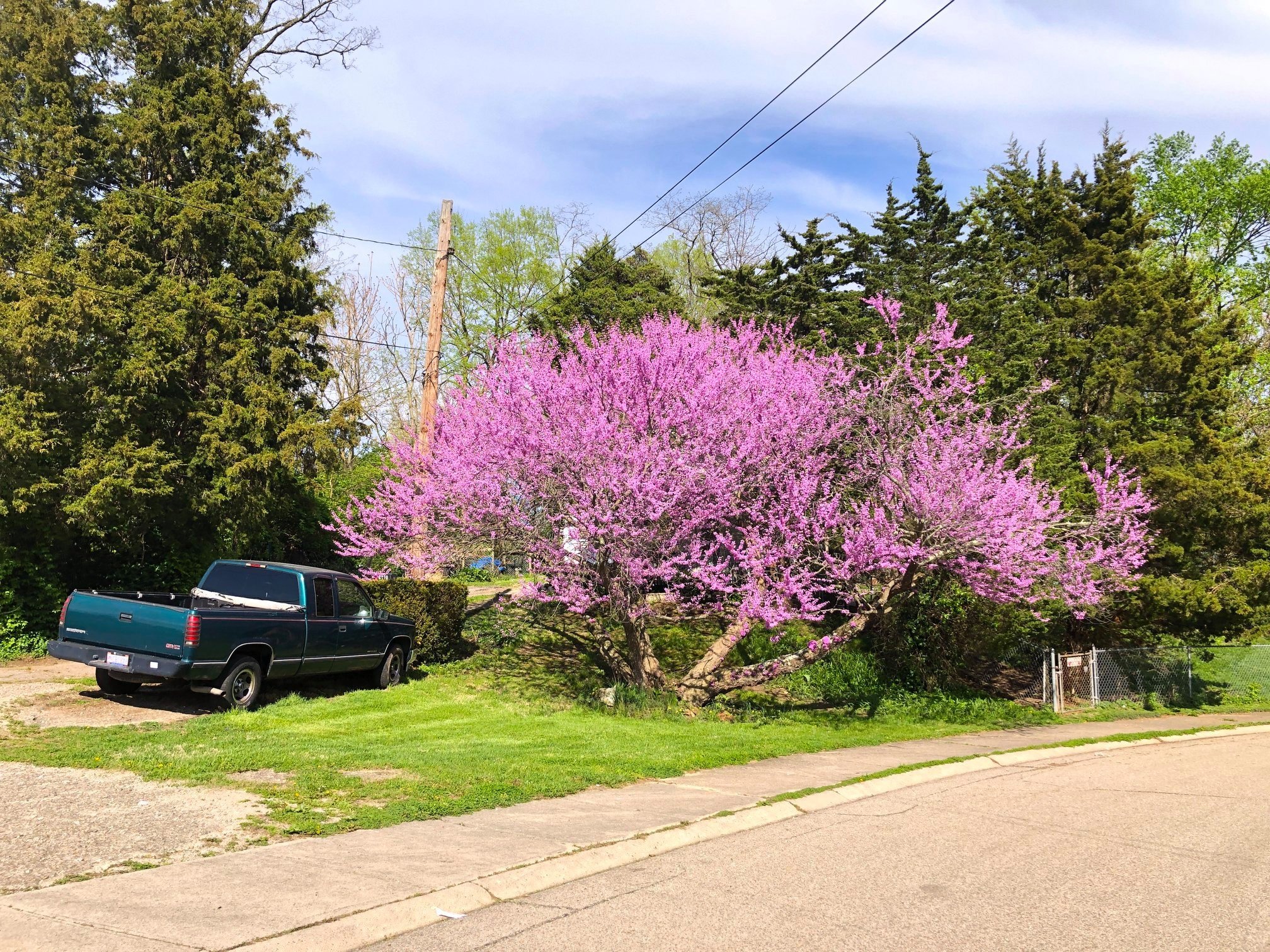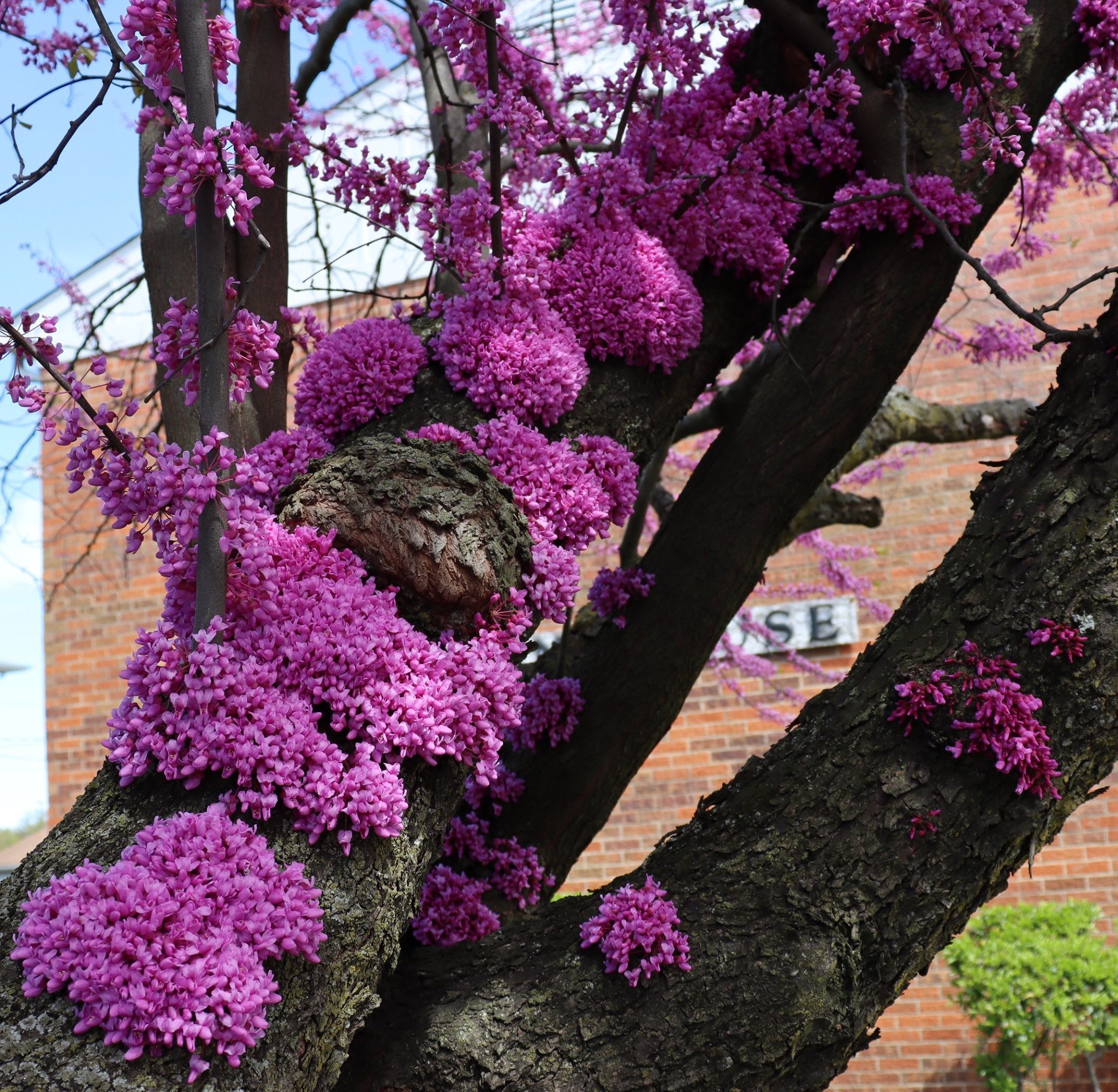Redbud trees (Cercis canadensis) reach 15-25 ft. tall and provide one of the most stunning displays of native spring blooms. The bright pink flowers are situated directly along the trunk and branches of the Redbud, unlike other flowering trees who hold their blooms out with a small leafstalk called a petiole. Redbuds, along with other early-blooming thicket species, fuel the newly emerged Queen Bumblebees as they begin to build their colonies for the coming year. They also attract carpenter bees, and other solitary native bees. Their main value ecologically is being a powerhouse for attracting native bees in the spring, particularly on days above 65 degrees and at least somewhat sunny.
If viewing on a Cell Phone, turn the phone sideways for better orientation of article and pictures. If the article isn’t displaying well, it will display properly on a laptop, tablet, or desktop computer.
The Eastern Redbud naturally grows on stream bank edges, prairie edges, open woodlands, wood edges, canopy gaps within forests, and savanna ecosystems. It needs partial to full-sun to thrive, and fits well up against the sides of 1 or 2 story homes. When using redbuds for invasive plant removal during replantings you can utilize its ability to grow out of rocky dry, or moist soil, all the same. It will seed itself around over time, as native pollinators help it bear thin bean pods through the frenzy of pollination that occurs in April, as long as you initially plant at least 2 to cross-pollinate each other. If you’re inexperienced, redbud is a good beginners’ plant. Squirrels will eat some the pods in August, before tree-nut crops begin ripening.
The tree naturally hollows out fairly quickly, over the course of 25-35 years, providing nooks and crannies for wildlife to live inside. 2 rules of thumb, give redbuds at least 4 hours of sunlight and don’t plant this tree in wetlands, it doesn’t thrive in long-term saturated soils. The actual base of the tree can easily live for over 35 years, by pruning the old-quickly decaying wood back to the main leaders allowing new heartwood and sapwood on the branches to develop. Otherwise the original trunks will fall apart after 30 to 40 years on average as a very quickly growing and climaxing small tree.
For the Pictures Above: Select/click the images above to expand them then click/tap to advance to the next picture. Also, Turn your cellphone side ways for horizontal pictures.
Atheistically, the best thicket species to plant with Redbuds are native Plums as they get about the same size and they bloom at the same time of spring providing a contrast of pink blooms and white blooms (from native plums).
This article is only available here at Indigescapes.com, not Facebook. To make sure you don’t miss our website articles like this one, sign up for our email list at the bottom of this webpage and you’ll receive these free educational Native Plant articles weekly through email.
To fast track your Native Plant Restoration knowledge, consider one of our native plant educational books here: Indigescapes.com/Ourbooks - the shipping is cheaper if all 3 books are purchased in one order as opposed to separate orders.


